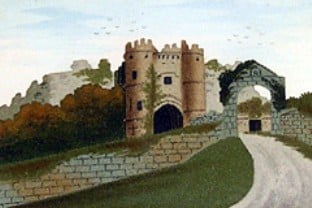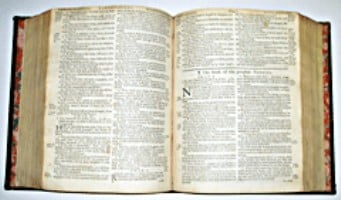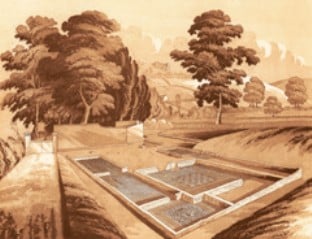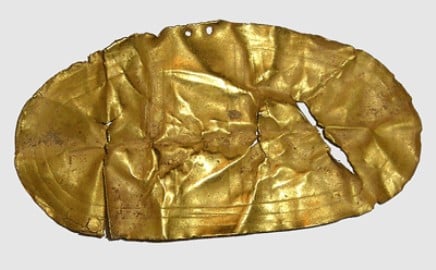Museum of Island History
Past Exhibition
Recent Acquisitions
9 September 2006 – 24 March 2007
_____________________________________________________________________________
The Isle of Wight Council Heritage Service collects, documents and preserves items relating
to the Island, in order to interpret and illustrate the human history of the Isle of Wight.
Social History material began to be collected by the Museum Service in 1975. Since then the
collections have expanded considerably and in 1996 this Museum opened, to display a cross
section of social history material telling the story of the Island's history.
Each year many new items are added to the collection as donations, bequests and purchases.
This small exhibition displayed some of the artefacts that had recently come into the
collection.
_____________________________________________________________________________
 | | Sand PictureCarisbrooke Castle gatehouse. IWCMS:2006.79.1 |
Family BiblePurchased by Richard Smith (1717-1789) in February 1746. He brought it to the Island where it remained in the family until November 2003. Public Donation IWCMS:2006.77 | |  |
 | | Coloured PrintCarisbrooke Roman Villa. Public Donation IWCMS:2006.81.2 |
Copper Age gold basket ornamentCirca 25th – 22nd centuries BC Discovered near Calbourne in March 2005. Length – 40mm Depth – 21.3mm BM2005 T113 | |  |
This oval plaque of thin sheet gold was found on the surface of the plough-soil in a folded
state. Dating to the phase of copper usage prior to the adoption of bronze, circa 25th-22nd
centuries BC. This gold ornament is among the earliest gold-work found in Britain.
Light linear decoration has been made with a stylus. Three parallel grooves outline the edge
while two further bands cross the middle of the plaque on the shorter axis. The plaque is
slightly asymmetrical in bowing more along one of the longer sides. In the centre of this side,
there is the remains of a stump of what would originally have been a narrow tang projecting
outwards. This tang was broken off or removed in antiquity.
Two tiny, neat perforations have been made in the edge of the plaque so that it could be
attached to clothing. Prior to the loss of the tang the object was of the type known as a
‘basket’ type, sometimes called earrings or tress rings. The plaque would have been curled
into a tube and the tang then wrapped around it.
_____________________________________________________________________________
Page last updated on: 28/07/2011





